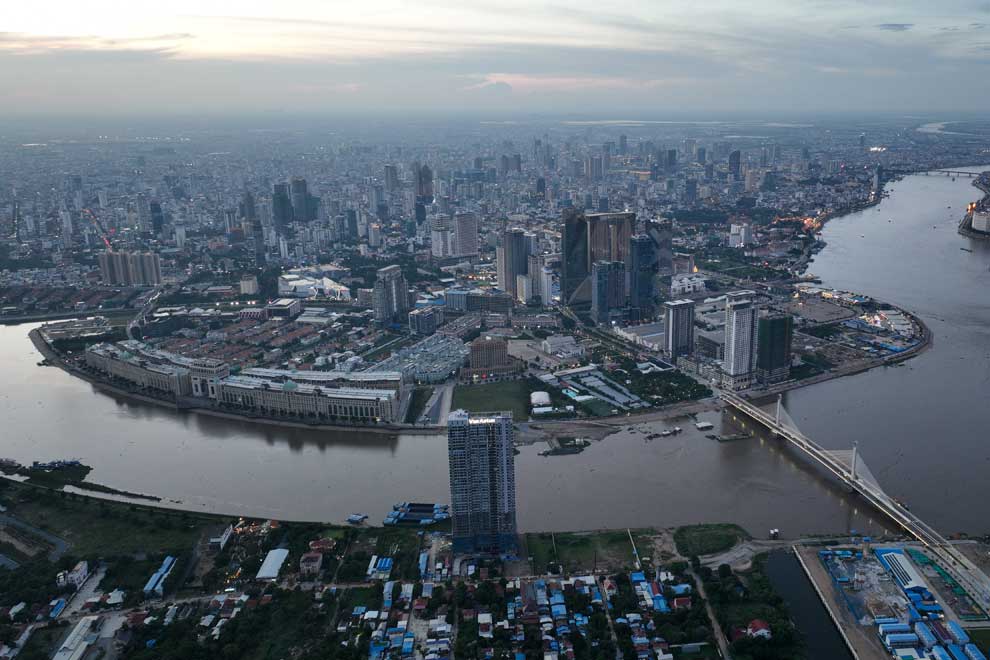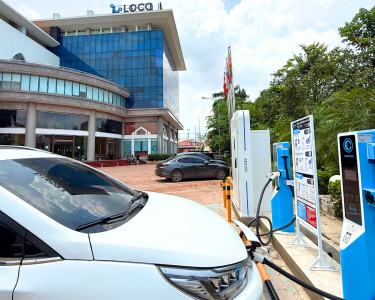Kosalthanan Neth
The Cambodian government has set a bold aspiration: to achieve upper-middle-income status by 2030 and high-income status by 2050. To meet this goal, Cambodia would need to raise its gross national income (GNI) per capita from $2,390 in 2023 to $14,005 by 2050.
This would require sustaining an average annual growth rate of 6.77 percent over the next 27 years—a target that exceeds the 2025 growth forecasts of 5.8 percent of the Asian Development Bank and the International Monetary Fund.
Although the goal is highly ambitious, it signals a determination to drive transformative national development.
Still, the question remains: can Cambodia truly meet this target when Brunei and Singapore are the only two countries in ASEAN to have achieved high-income status?
Countries like Malaysia and Thailand have remained stuck in the middle-income range for over 50 and 30 years, respectively.
For Cambodia to succeed where others have stalled, it must commit to deep economic diversification, a reimagined education system, and serious reforms in governance to drive innovation-led growth.
This opinion outlines key constraints Cambodia must confront to realise its 2050 vision, including dependence on low-value sectors, limited innovation, and weak institutional capacity.
Structural risks: Overreliance on low-value sectors
For Cambodia to realistically achieve high-income status by 2050, it must transition toward innovation-led growth and diversify its economic base.
Read More: ADB and SERC Launch 10-Year Securities Masterplan to Tackle Market Challenges
The economy remains heavily reliant on low-wage, low-value added sectors such as garments, footwear and travel goods, which accounted for more than 11 percent of GDP in 2022. Agriculture, which contributes around 17.1 percent of GDP, continues to depend largely on unprocessed commodity exports.
This structure is unsustainable for reaching high-income status, as it limits domestic value creation and productivity gains.
Without a deliberate push to move up the value chain into agro-processing, electronics, and other high-productivity sectors, Cambodia risks being squeezed between more competitive low-wage countries like Bangladesh and advanced-knowledge economies like Japan and Korea.
Tourism, accounting for roughly 9.4 percent of GDP, also exposes the country to volatility from external demand shocks, as the COVID-19 pandemic made clear.
Additionally, the economy faces growing concerns about overinvestment in real estate, particularly in luxury condominiums and gated communities with high vacancy rates.
A 2023 World Bank report on the East Asia and Pacific region highlighted signs of overheating in real estate credit markets, including the rise of unregulated lending through shadow banking.
These trends suggest that capital is increasingly flowing into speculative assets instead of sectors that generate long-term productivity growth, such as education, manufacturing, and technology.
Cambodia’s path to high income cannot rely on the continued expansion of low-value sectors.
Redirecting financial and policy incentives away from speculation and toward innovation, skills, and domestic enterprise upgrading is essential to avoid stagnation and ensure inclusive and sustainable growth.
Innovation deficit and human capital gaps
Cambodia’s limited integration into global value chains remains a core constraint to innovation-led development.
In sectors such as garments and footwear, most production facilities are foreign-owned and focused on low-value, labour-intensive processes, with minimal domestic ownership or technological upgrading.
This pattern is consistent across other strategic sectors like electronics manufacturing, where local firms have minimal presence, with the exception of agriculture where Cambodian ownership is more prevalent.
The country also lags behind its regional peers in innovation performance. According to the Global Innovation Index, Cambodia ranks 103rd among 133 economies, and is significantly behind Thailand (41st) and Vietnam (44th).
Compounding this challenge is the country’s low investment in research and development, which stood at just 0.12 percent of GDP in the 2023 World Bank data.
Human capital shortfalls further exacerbate the innovation gap. Only 35.1 percent of the population has completed upper secondary education, and the national dropout rate stands at 15.6 percent, disproportionately affecting students from rural and low-income backgrounds.
Learning outcomes remain a concern, with only 12 percent and 10.4 percent of students reaching basic proficiency in mathematics and science, respectively, according to the 2022 PISA assessment.
Moreover, shortages of qualified STEM teachers and the lack of infrastructures such as laboratories and digital devices—particularly in rural areas, continue to hinder educational outcomes.
Only 24 percent of students have access to digital equipment or labs.
Without urgent investment in education quality, digital access, and research capabilities, Cambodia risks falling further behind in its transition toward an innovation-driven economy.
Closing this gap is essential for sustaining long-term productivity growth and avoiding the middle-income trap.
Weak institutions and governance
Governance is central to achieving inclusive growth, and strong institutions are a proven driver of long-term economic development.
Yet Cambodia continues to face systemic governance challenges. According to Transparency International’s Corruption Perceptions Index, Cambodia ranks 158 among 180 countries, and the World Bank’s Business Ready (B-READY) index assigns it a score of just 61.76.
While progress has been made in reducing overt corruption, significant institutional weaknesses remain.
Informal payments such as tax “gifts” and facilitation fees persist in the business environment, creating barriers to entry for firms without the right political or bureaucratic connections.
Overly burdensome administrative procedures often compel businesses to make unofficial payments simply to move through routine processes such as tax compliance or registration.
These practices increase the cost of doing business and undermine fair competition.
The widespread presence of informal economic activities further complicates the business environment, limiting tax collection and reducing the government’s fiscal capacity to invest in critical public goods.
Meanwhile, excessive inspection and long processing times for basic administrative services continue to deter investment and innovation.
Conclusion
To achieve its high-income goal by 2050, Cambodia must urgently tackle key structural challenges.
The economy must diversify beyond garments and agriculture by moving up the value chain—investing in agro-processing, electronics, and linking foreign investors with local firms, especially in special economic zones.
Oversight of real estate credit should be tightened to curb speculation and channel financing toward SMEs.
Innovation should be a national priority, with increased R&D funding, support for startups, and stronger ties between academia and industry.
Education reform is vital to meet labour market needs, particularly in STEM, through better training, digital access, and modern curricula.
Governance reform is equally critical. Digitalising public services, simplifying bureaucratic procedures, and promoting business formalisation can help reduce corruption and enhance competitiveness. Additionally, establishing a state reform council could drive the modernisation of public institutions making them more transparent, efficient, and future-ready.
Investing in capacity building across all sectors, while fostering a culture of transformative leadership, innovation, and digital transformation, will be key to sustaining long-term institutional effectiveness.
Reaching high-income status is ambitious, especially given the prolonged middle-income status of regional peers, but with bold reforms and persistent effort, Cambodia can forge a path toward long-term prosperity.





